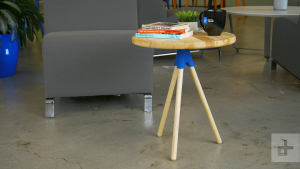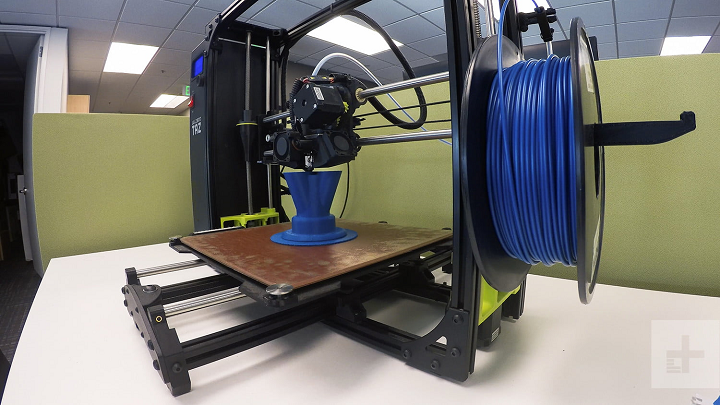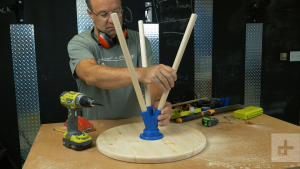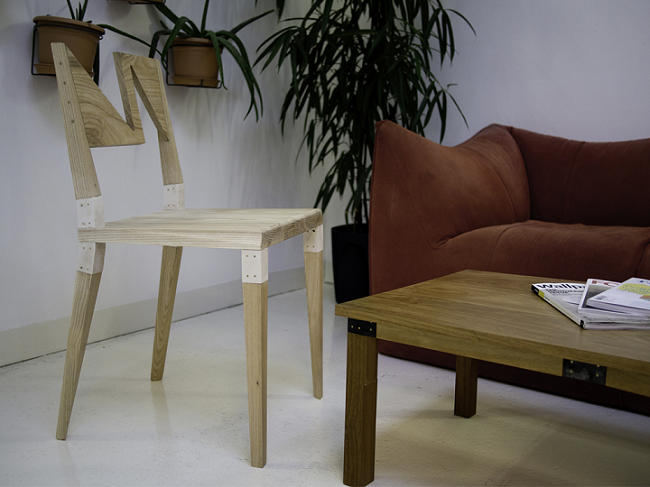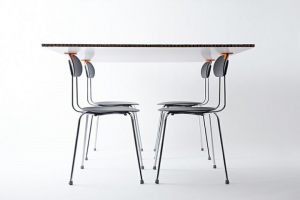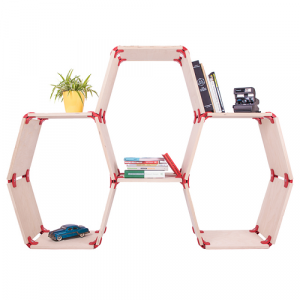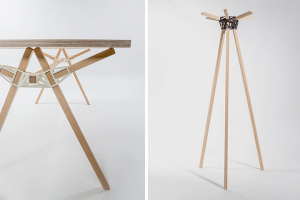While it is absolutely possible to 3D print custom furniture today, I think we can all agree that doing so is generally not as easy as just heading out to IKEA, Natuzzi or Ethan Allen or Value City Furniture or wherever it is you buy your home furnishings. In addition, some of the 3D printed furniture out there is just not that practical. Some pieces can even look like they belong on the set of another Willy Wonka movie remake…sorry if that’s harsh. But, that doesn’t mean we can’t use 3D printing to enhance or build furniture through the creative use of brackets, connectors, fasteners, and joints.
It’s entirely possible to improve upon furniture and make it your own without creating the entire piece in a wood or 3D printing workshop; most desktop 3D printers don’t have the build area to print a kitchen table anyway. But using connectors allows you to customize your furnishings without having to build something entirely new…unless you feel like it, of course.
Asa Christiana and Drew Prindle with Digital Trends recently highlighted a quick DIY end table project that used a 3D printed tripod joint.
“Before you do anything else, you should fabricate the 3D printed tripod joint,” Christiana and Prindle wrote. “This part is the keystone of the entire table, so it’s crucial that you get it right. By printing it first, you’ll be able to take it with you when you head out to buy materials, and make sure that all the dowels and screws you get will fit properly.”
The simple design for the 3D printable joint model, by Cults3D user Alejandro Macias, will need to be tweaked so you’re sure the three 7/8″ dowel rods used as the table legs will fit. Once the file has been downloaded and loaded into a slicer program, you’ll want to scale the part’s flange up to about 106% of its original size, or even 107% just to be safe. Print the part on a 3D printer with a build envelope of at least 105 mm wide and 130 mm tall.
“After printing a few of these suckers, we determined that you need to bump up the number of shells (the outer layers of the print) and the amount of infill (the interior of the print) considerably in order to give the completed part more structural integrity,” Christiana and Prindle explained. “We printed ours with six shells and 40 percent infill, but you might want to kick it up even more (say, 8 shells and 50 percent infill) if you plan on putting heavier items on the table.”
They also noted that the interior will need to have supports, as there is a possible failure-causing “unsupported stalactite in the middle of the model.”
The dowel rods should slide right into the 3D printed joint, which includes small screw holes in the sides for fixing everything into place; these holes will probably need to drilled a little bit larger so the screws can freely pass through.
“To make sure you don’t create the Leaning Table of Pisa, draw a light pencil line about 1.5 inches from the end of each leg before inserting it, to help you insert them all the same amount,” said Christiana and Prindle. “Once you do, use the screw holes in the flange to locate and drill small pilot holes in the sides of the dowels before driving the screws. There isn’t much danger of the screws cracking the tabletop, but they could split the dowels if you don’t drill pilot holes.”
To learn all the important details of building the actual table, check out the rest of the project here.
Over the last few years, we’ve seen all kinds of interesting 3D printed furniture connecting pieces. For example, the Control DIY Furniture collection by Jack Holloway offers open source, downloadable files of custom, 3D printable furniture joints that, once completed, can be fitted with standard dimension lumber to build benches, tables, and chairs. These joints are recommended to be printed in nylon (polyamide), acrylics, and even metal. These look so elegant, you’d think the entire piece was built to look that way.
3D printed connectors offer versatility, letting you create unique pieces of furniture that sit at unusual angles, link together, or even create a table out of four chairs and a flat surface – perfect for smaller spaces. Italian-Japanese Studio Minale-Maeda created 3D printable sculptural Keystone connectors, which can be ordered from the Rotterdam studio or, to help cut down on emissions resulting from shipping and the need for big-box stores, be 3D printed as an open source design. These connectors can be tightened easily with a screwdriver, to help you repurpose old furniture parts or assorted pieces of wood into new furnishings.
The Playwood collection of colorful 3D printed connectors by Italian designer Stefano Guerrieri gives you the flexibility to change up your environment on a whim, with only an Allen key needed to tighten the connections. Build your own furniture with whatever materials you want – so long as they are between 1.5 and 2 cm thick – and join the pieces together at 90°, 105°, or 150°, with three different kinds of recyclable polyamide connectors. According to the designer, Playwood was inspired as a modular and tactile response to the creativity-killing environment of a static office.
“We believe that people should be able to shape their own places according to what they do, we believe in modularity and creativity freedom,” said Guerrieri. “It doesn’t matter if it is a freelance studio or a billion dollar corporate office, the ability to organize your space is a powerful tool that brings office relationships to the next level and fosters innovation.”
Personally, I prefer my furniture to be a little less whimsical than the Playwood collection, but to each his own…which is the whole point of custom 3D printable furniture connectors, of course.
Discuss 3D printed furniture connectors and other 3D printing topics at 3DPrintBoard.com or share your thoughts in the Facebook comments below.

